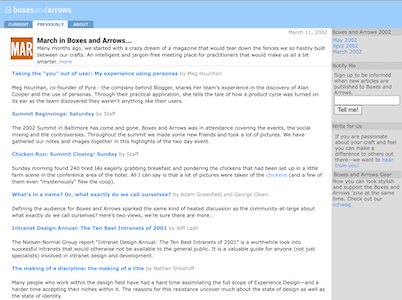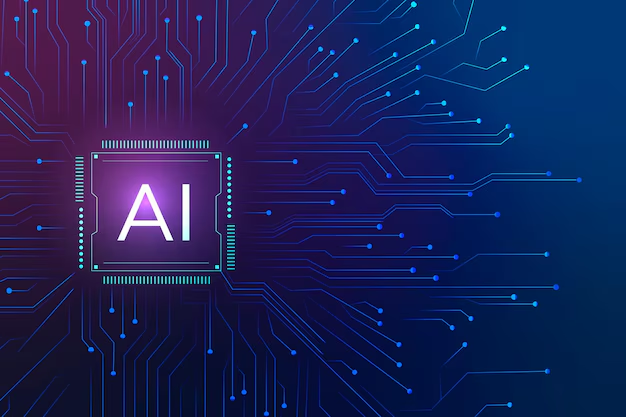Codifying Curiosity thru Contextual Inquiry - Karen Holtzblatt
Written by Erin Malone

Designers at Yahoo! in the early 2000's use affinity diagramming and contextual inquiry methods. photo © erin malone
Karen Holtzblatt is best known as the originator and evangelist of the research method Contextual Inquiry. Cocreated with Hugh Beyer, Contextual Inquiry has evolved into something known as contextual design, a practice for the design of systems.
The Nielsen Norman group defines Contextual Inquiry as “a type of ethnographic field study that involves in-depth observation and interviews of a small sample of users to gain a robust understanding of work practices and behaviors” This mixed methodology brings together observation of people in their environments without interaction, with interviews—watching what people do and later asking them questions about why they do what they do.
Contextual inquiry changed how interaction designers and researchers designed products to be more appropriate to how people actually work rather than relying on business goals of adding features for the sake of features. The difficulty with the method revolves more around the investment a company wants to make in terms of time: both time spent in customer environments watching what customers do and understanding why and time needed to analyze the observations and interviews into relevant insights.
Karen Holtzblatt received her doctorate in psychology from the University of Toronto and has been a research scientist at the University of Maryland’s iSchool. She has also taught courses at Stanford University and other institutions.
Holtzblatt introduced Contextual Inquiry in a postdoctoral internship with John Whiteside at Digital Equipment Corporation in 1987. The method was created in response to the small percentage of usability issues identified in the design process, usually at the end. In an interview from 2011, Holzblatt mentioned that she was interested in determining what it would take to really figure out what people want in a product and system.[1]
After completing her internship, through her work at DEC, Holtzblatt added to her methodology the practices of affinity diagramming (from Lou Cohen’s Quality Group) and paper prototyping with Post-its (from Pelle Ehn and Kim Madsen).[2]
In 1992, she and Hugh Beyer co-founded their company InContext Design and in 2013 she and Beyer overhauled the method to account for the proliferation of mobile phones and always accessible technology through devices and the growing use of IoT devices in homes and businesses. The research Holtzblatt and Beyer conducted to overhaul their methods, called “Project Cool” became a process for understanding what the “cool” user experience was and what products were cool and why. Their ethnographic research encouraged people to show them what they experienced as cool and using their insights, they developed seven design principles associated with Cool Concepts—each mapping to principles that enhance the joy of life—including Accomplishment, Connection, Identity, and Sensation and joy in use which included Direct to Action, The Hassle Factor, and the Learning Delta.[3] This framework fundamentally changed how they approached Contextual Design and the methods integrated into that process and resulted in their 2017 book Contextual Design: Evolved.
Two of the books co-authored by Holtzblatt.
Holtzblatt has co-authored several books with Beyer on the methods including, Contextual Design: Defining Customer-Centered Systems (1998), Contextual Design: Evolved (2015) and Contextual Design: Design for Life (2017). After agile practices became more prevalent in the development process, they released Rapid Contextual Design: A How-to Guide to Key Techniques for User-Centered Design (2005) to address the criticisms that the process takes too long when employed on projects with tight timelines.
In addition to her work practicing, teaching, and evangelizing Contextual Design, Holtzblatt has been researching and speaking about diversity and retention of women in tech since 2016. She is the founder of the organization WITops (2018) which is dedicated to helping technology companies engage and retain women and other diverse people as employees. The organization started as a grass-roots volunteer organization after Holtzblatt led her students at Stanford in a research project on this topic. Through her research, Holtzblatt has determined that women leave the field 50% more often than men and take criticism more personally than men[4]. Holtzblatt co-authored the book Retaining Women in Tech for the organization which provides training, resources, and information for both women in the field and companies looking to make changes in how they retain their employees using the research that Holzblatt and her teams have collected.[5]
Holtzblatt was elected to the CHI academy in 2007 and was given the inaugural ACM SIGCHI Lifetime Award for Practice in 2010.
Footnotes
[1] Helen Sharp, Yvonne Rogers, and Jenny Preece, Interaction Design: Beyond Human-Computer Interaction, 3rd ed. (Indianapolis, In: Wiley, 2011). Featured interview with Karen Holtzblatt, Chapter 10.
[2] Ibid
[3] Karen Holtzblatt and Hugh Beyer, Contextual Design: Evolved (San Rafael, California: Morgan & Claypool, 2015).
[4] Karen Holtzblatt, et al., “Mini Living Lab: Improving Retention and Success for Women in Tech and Diverse Teams through Redesigning the Critique Process” (Glasgow, Scotland Uk: Association for Computing Machinery, 2019), 1–4, https://doi.org/10.1145/ 3290607.3311752.
[5] Karen Holtzblatt, “Best Practices in Critique: Retaining Women in Tech through Process Excellence,” Powerpoint presentation (WITops, n.d.).
Bibliography
“2010 SIGCHI Awards – ACM SIGCHI.” SIGCHI, 2010. https://sigchi.org/awards/sigchi-award-recipients/2010-sigchi-awards/.
Farnsworth, Carol, and Karen Holtzblatt. “Diversity in High Tech: Retaining Employees Once They’re in the Door,” 1077–80. San Jose, California, USA: Association for Computing Machinery, 2016. https://doi.org/10.1145/2851581.2886429.
Holtzblatt, Karen. “Best Practices in Critique: Retaining Women in Tech through Process Excellence.” Powerpoint presentation. n.d.
———. “Introduction.” Commun. ACM 48 (July 2005): 32–35. https://doi.org/10.1145/1070838.1070862.
———. “The @Work Experience Framework: A Guide for Retaining Women in Technology,” 1. Heilbronn, Germany: Association for Computing Machinery, 2018. https://doi.org/10.1145/3196839.3196840.
———. “What Makes Things Cool? Intentional Design for Innovation.” Interactions 18 (November 2011): 40–47. https://doi.org/10.1145/2029976.2029988.
Holtzblatt, Karen, Michael Ahmadi, Anne Weibert, and Nicola Marsden. “Mini Living Lab: Improving Retention and Success for Women in Tech and Diverse Teams through Redesigning the Critique Process,” 1–4. Glasgow, Scotland Uk: Association for Computing Machinery, 2019. https://doi.org/10.1145/3290607.3311752.
Holtzblatt, Karen, and Hugh Beyer. Contextual Design : Evolved. San Rafael, California: Morgan & Claypool, 2015.
Holtzblatt, Karen, and Shoshana Holtzblatt. “Communicating User Research in Order to Drive Design and Product Decisions,” 1155–58. Toronto, Ontario, Canada: Association for Computing Machinery, 2014. https://doi.org/10.1145/2559206.2559207.
Holtzblatt, Karen, and Bill Kules. “Using Games for Good to Address Diversity in High Tech,” 1338–41. Denver, Colorado, USA: Association for Computing Machinery, 2017. https://doi.org/10.1145/3027063.3049279.
Holtzblatt, Karen, and Nicola Marsden. “Designathon to Support Women in Tech,” 1–4. Montreal QC, Canada: Association for Computing Machinery, 2018. https://doi.org/10.1145/3170427.3185361.
Marsden, Nicola, and Karen Holtzblatt. “How Do HCI Professionals Perceive Their Work Experience? Insights from the Comparison with Other Job Roles in IT,” 1–6. Montreal QC, Canada: Association for Computing Machinery, 2018. https://doi.org/10.1145/3170427.3188501.
Sharp, Helen, Yvonne Rogers, and Jenny Preece. Interaction Design : Beyond Human-Computer Interaction. 3rd ed. Indianapolis, In: Wiley, 2011. Interview with Karen Holtzblatt, chapter 10.
“WITOps | Changing the Paradigm for Women in Tech.” WITops. Accessed November 6, 2021. https://www.witops.org/.
Selected Stories

Sasha Costanza-ChockProject type

Kaaren HansonProject type

Ari MelencianoProject type

Mizuko Itoresearch

Boxes and ArrowsProject type

Mithula NaikCivic

Lili ChengProject type

Ovetta SampsonProject type

Yehwan SongProject type

Anicia PetersProject type

Simona MaschiProject type

Jennifer BoveProject type

Chelsea JohnsonProject type

Donna SpencerProject type

Lisa WelchmanProject type

Sandra GonzālesProject type

Amelie LamontProject type

Mitzi OkouProject type

The Failings of the AIGAProject type

Jenny Preece, Yvonne Rogers, & Helen SharpProject type

Colleen BushellProject type

Aliza Sherman & WebgrrrlsProject type

Cathy PearlProject type

Karen HoltzblattProject type

Sabrina DorsainvilProject type

Lynda WeinmanProject type

Irina BlokProject type

Jane Fulton SuriProject type

Carolina Cruz-NeiraProject type

Lucy SuchmanProject type

Terry IrwinProject type

Donella MeadowsProject type

Maureen StoneProject type

Ray EamesProject type

Lillian GilbrethProject type

Mabel AddisProject type

Ángela Ruiz RoblesDesigner



